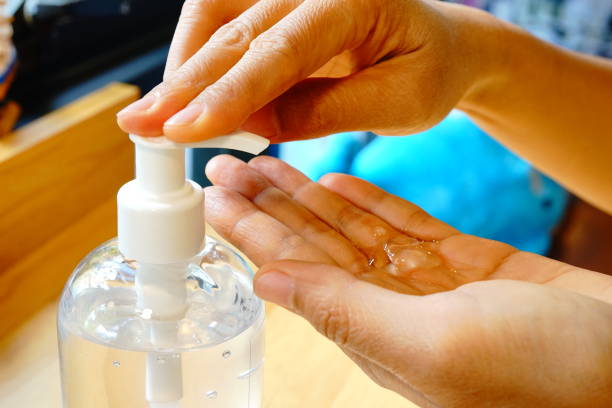Sanitizer Recipes: How To Make Hand Sanitizer – Step-by-step

Some commercial hand sanitizer contains ingredients as scary as the germs they protect you from, so why not make your own hand sanitizer from ingredients you select?
This is an excellent project for kids as well as adults since the project can be expanded to include a discussion about hygiene and disinfection. You’ll save money, protect yourself from germs, and can customize the scent of the hand sanitizer so it doesn’t smell medicinal.
Below, you’ll find instructions for making safe hand sanitizer at home. Be aware, it’s a bit tricky!
Stay safe.
The World Health Organization (WHO) has cautioned against making homemade hand sanitizer, as some ingredients may be at best ineffective, or at worst, downright harmful.
However, recognizing the need for more protection, the WHO has produced a PDF with comprehensive instructions on developing your own safe, effective hand sanitizer. Unfortunately, it’s a fairly complex process. Your best bet is to wash your hands with soap and water as often as you can!
WHO-approved hand sanitizer instructions
Ingredients
- Isopropyl alcohol 99.8% — 7515 ml
- Hydrogen peroxide 3% — 417 ml
- Glycerol 98% — 145 ml
- Sterile distilled or boiled cold water
Tools
- 10-litre glass or plastic bottles with screw-threaded stoppers, OR
- 50-litre plastic tank, translucent to see liquid level, OR
- Stainless steel tanks with 80-100-litre capacity
- Wooden, metal, or plastic spoon for mixing
- Measuring cylinders and jugs
- Plastic or metal funnel
- 100 ml plastic bottles with leak-proof tops, OR
- 500 ml glass or plastic bottles with screw tops
- An alcoholmeter: the the temperature scale is at the bottom and the ethanol concentration (percentage v/v) at the top
Directions
- Pour the alcohol into the large bottle or tank
- Add hydrogen peroxide using the measuring cylinder
- Add glycerol with measuring cylinder. As glycerol is very viscous and sticks to the wall of the measuring cylinder, it should be rinsed with some sterile distilled or cold boiled water and then emptied into the bottle or tank
- Top up the bottle or tank to the 10-litre mark with sterile distilled or cold boiled water
- Place the lid on as quickly as possible to prevent evaporation
- Mix the solution gently
- Immediately divide up the solution into the small bottles, and place them in quarantine for 72 hours.
- This allows any spores present in the alcohol or bottles to be destroyed
Final products
Final concentrations
- Isopropyl alcohol 75% (v/v)
- Glycerol 1.45% (v/v)
- Hydrogen peroxide 0.125% (v/v)
Quality control
- Always perform quality control on homemade sanitizer
- Verify the alcohol concentration with the alcoholmeter. Make any necessary adjustments in volume to obtain the final recommended concentration
- The accepted limits should be around 77% on the alcoholmeter, plus or minus 1%, at 25 degrees Celsius
Keep the solutions in a cool room. Be careful if you attempt this. We recommend reading the entire WHO PDF before trying out this recipe.